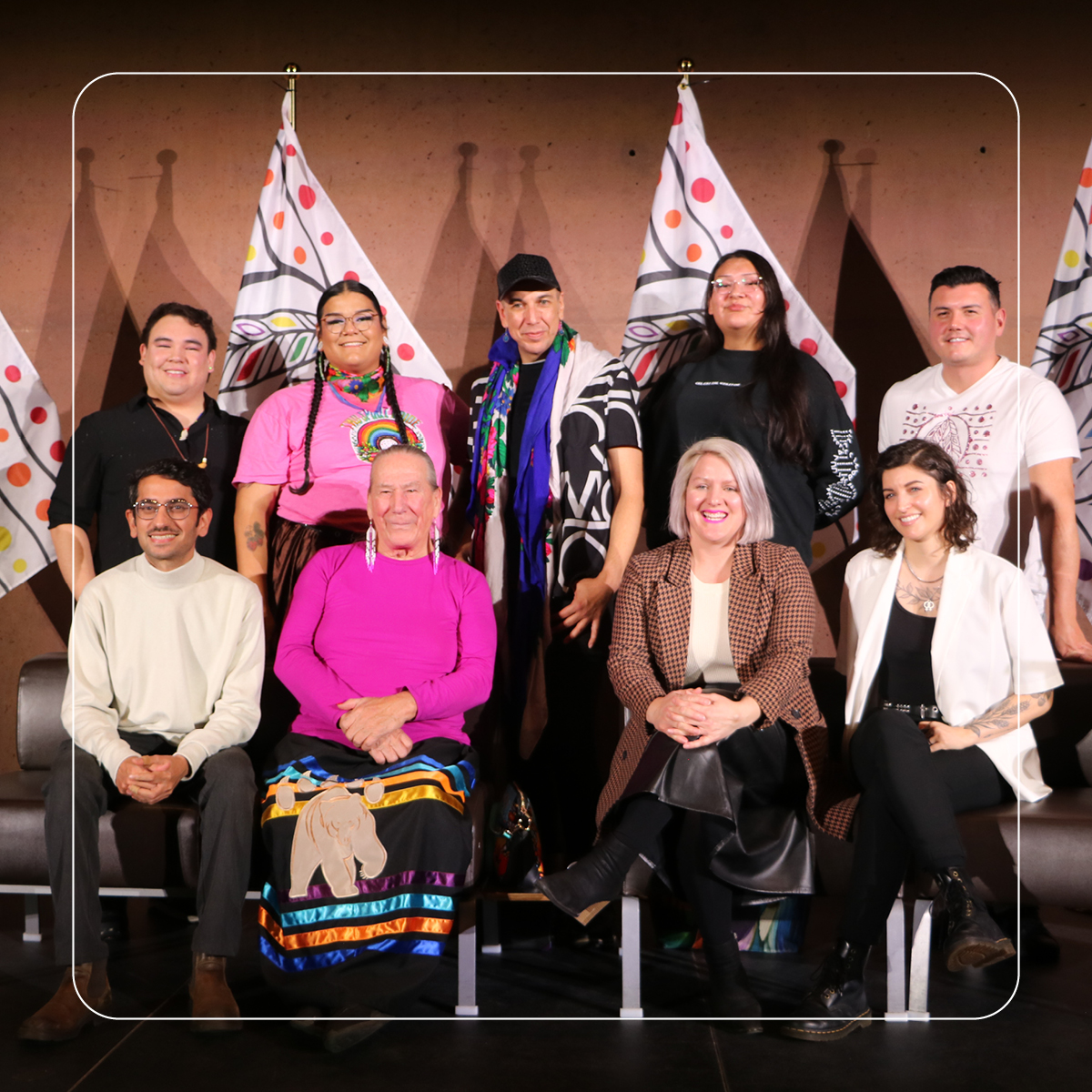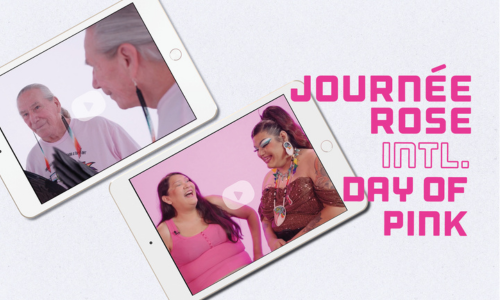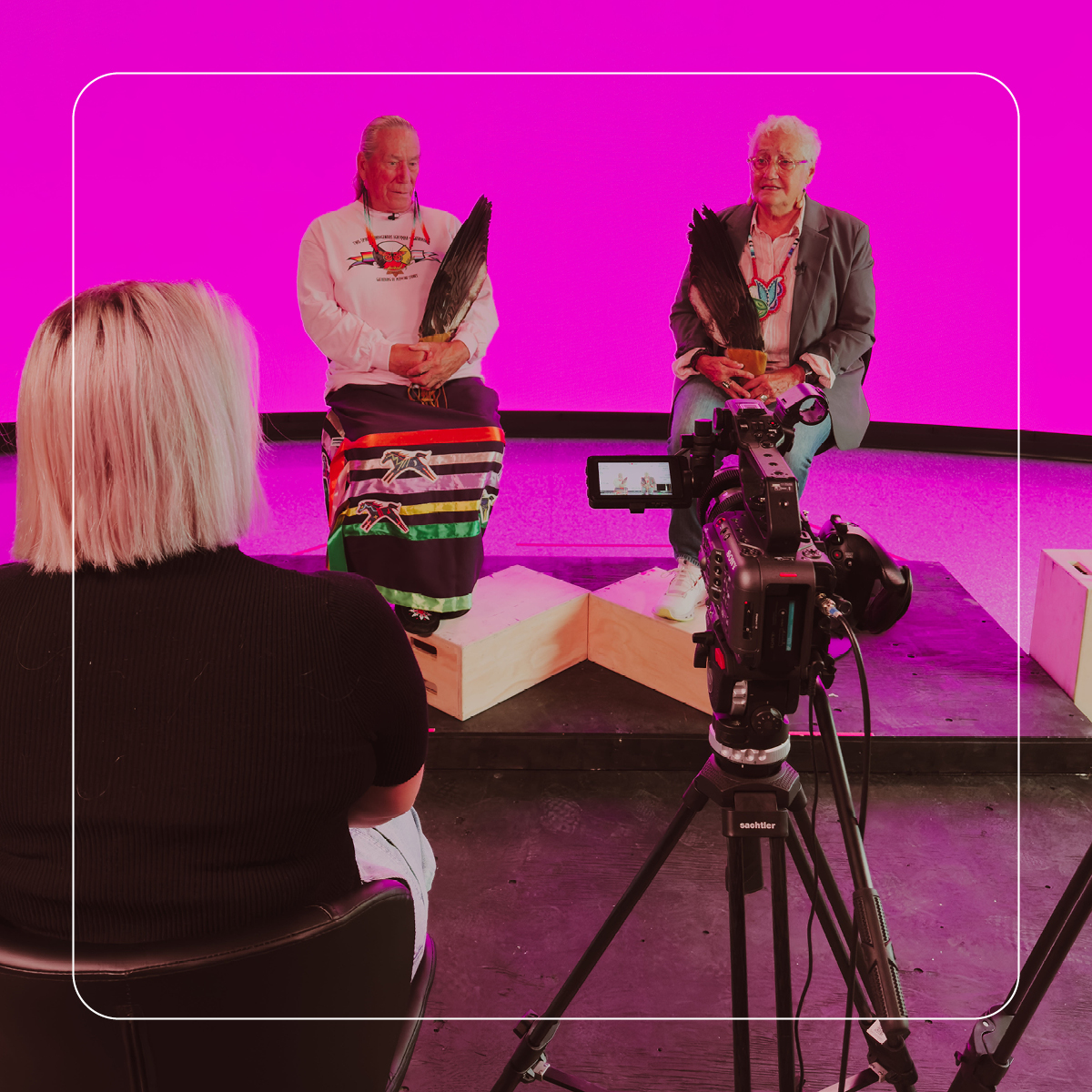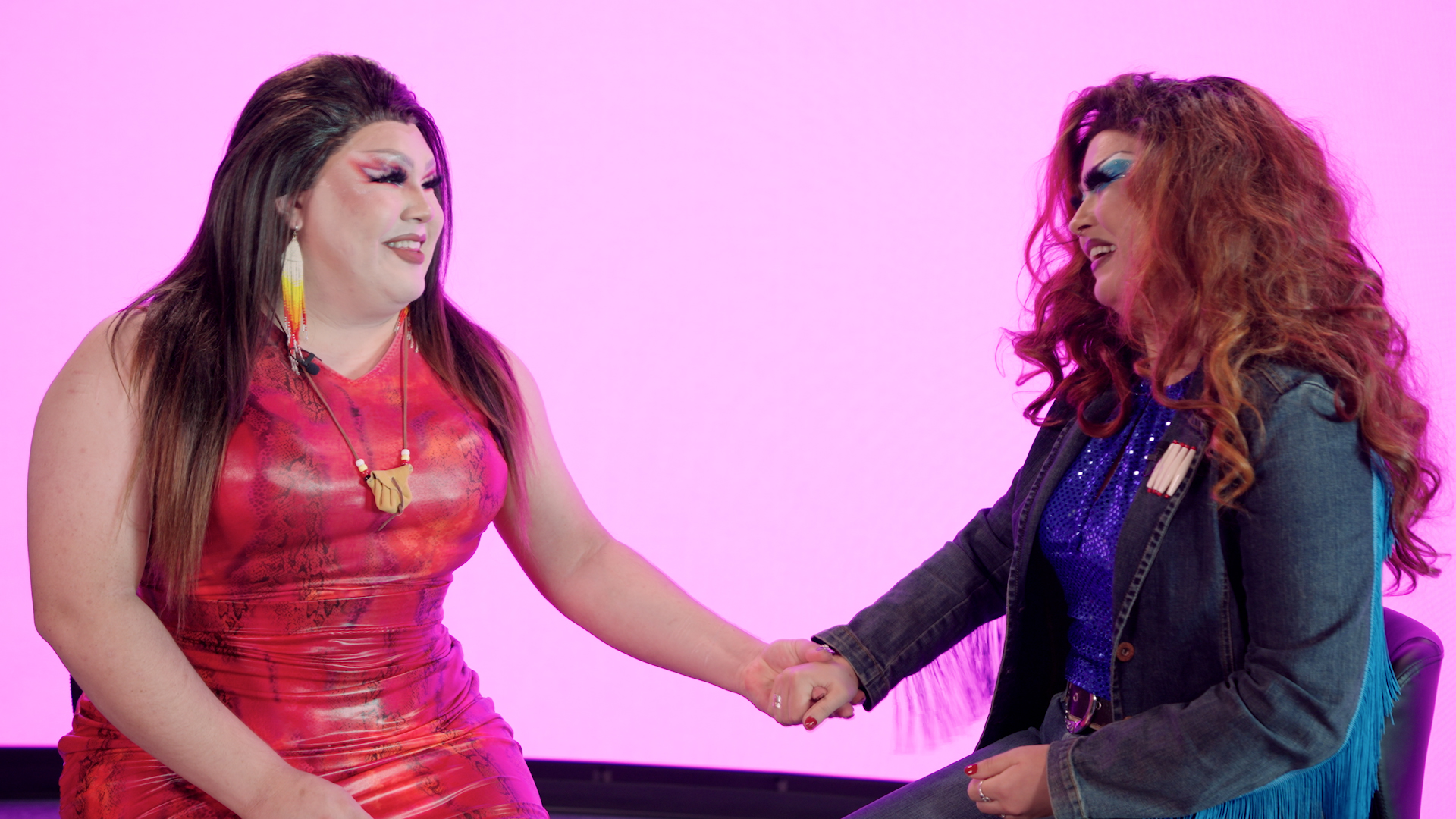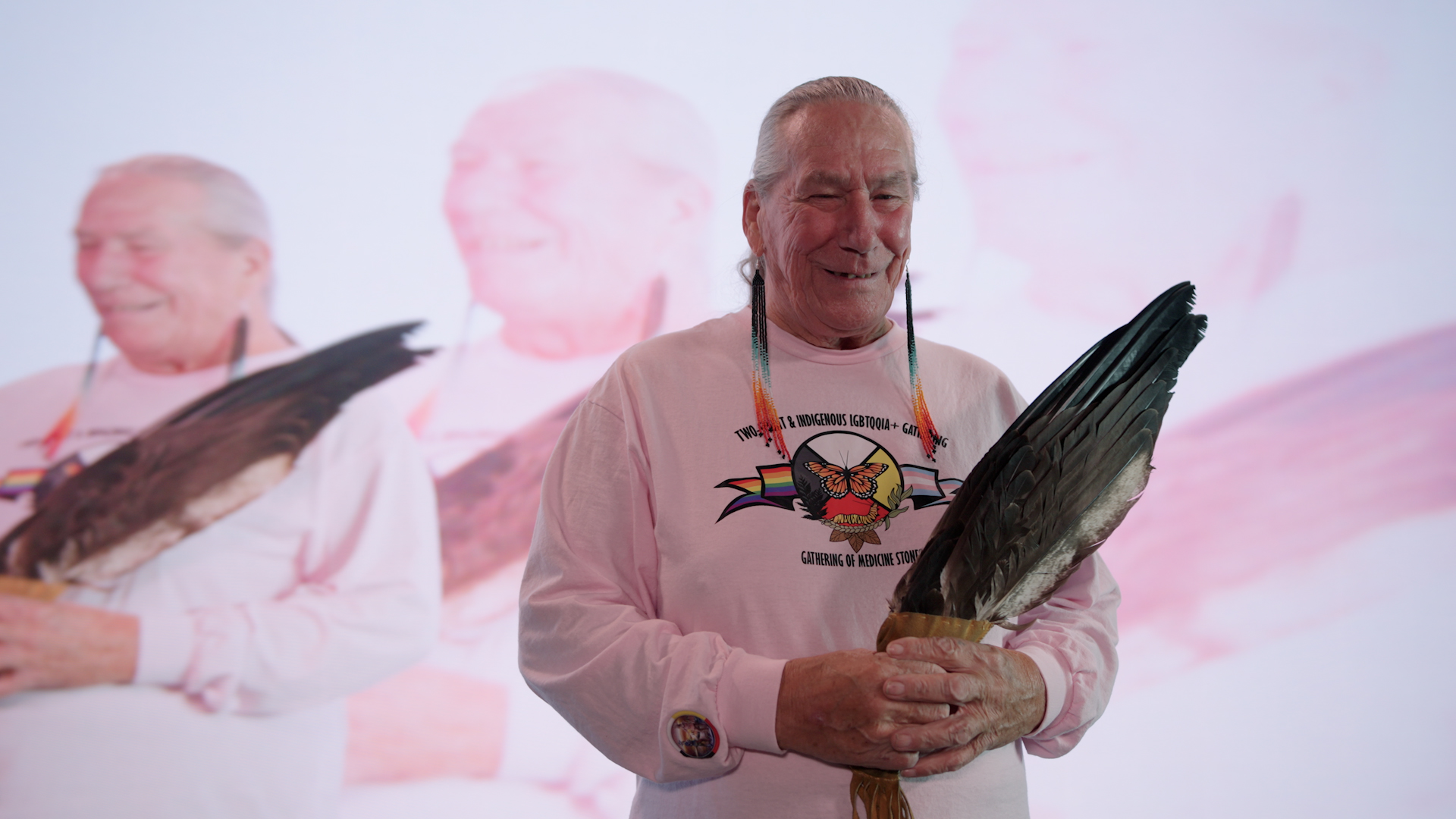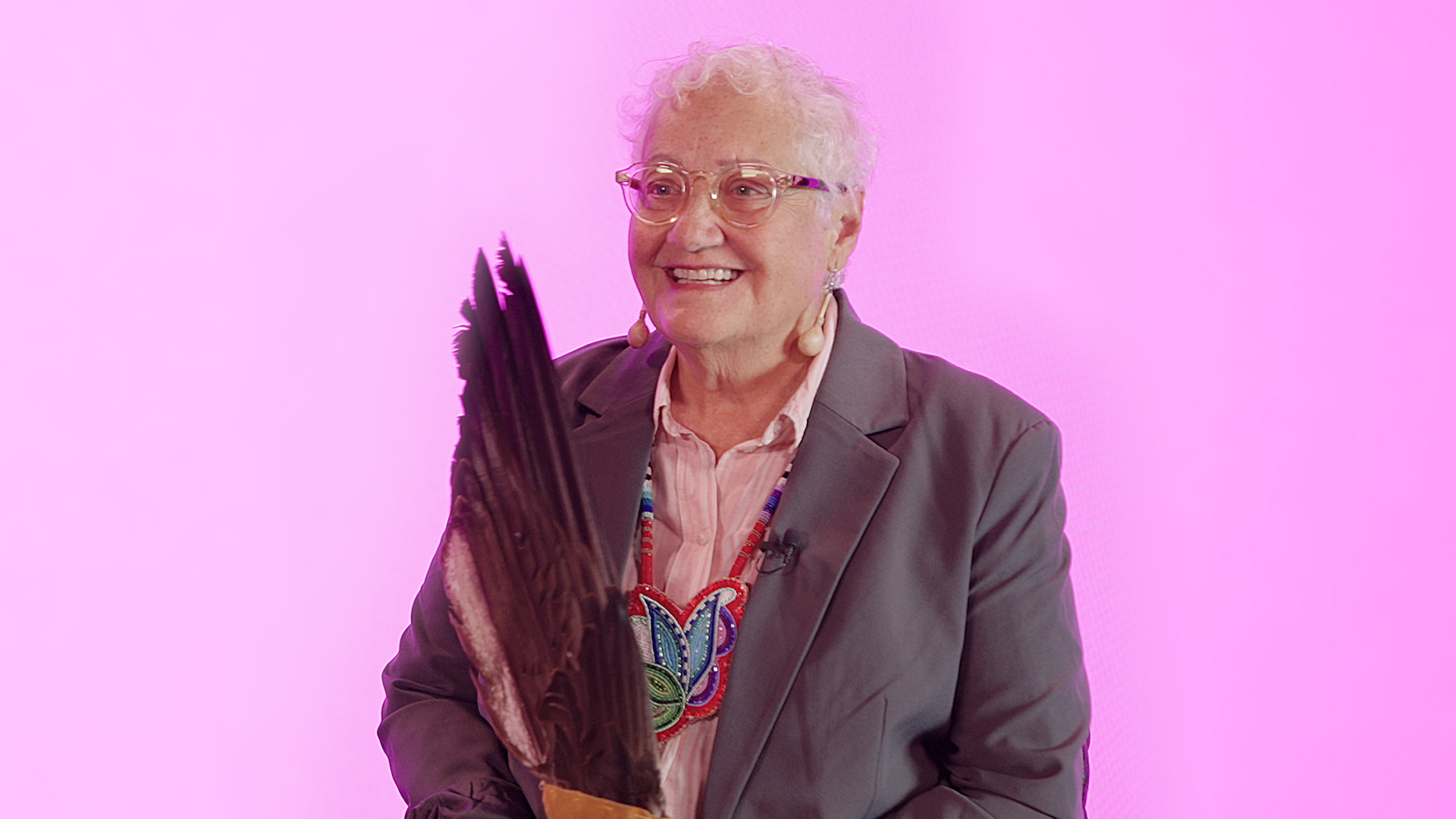
Each year, International Day of Pink produces a mini documentary to support its educational curriculum and programming. For 2023, they set out to share the origin story and present-day use of the term “Two-Spirit,” as well as its cultural significance across generations. Their goal was to deepen understanding among high school students—who are the primary viewers—by documenting and uplifting lived experiences of Two-Spirit people.
We knew this audience would require more than just great content—it had to be emotionally resonant and visually engaging enough to hold their attention, while still meeting the standards of teachers who act as gatekeepers for what ends up in classrooms.
We proposed a more strategic and conceptual approach than their previous in-house productions. We wanted the Two-Spirit storytellers to remain the focus, but felt there was an opportunity to enhance the visuals with meaningful symbolism. The creative direction needed to complement the rich oral histories while visually expressing the expansiveness of identity that came through in each conversation.
The goals were clear:
Share intergenerational perspectives on the term “Two-Spirit”
Respectfully represent Indigenous voices and lived experiences
Create a resource that educators would be proud to bring into classrooms
Inspire empathy and understanding among young people
And, ultimately, to make everyone involved in the project feel seen, heard, and proud of what they helped bring into the world.
We began by aligning with International Day of Pink on a shared vision: to spotlight intergenerational Two-Spirit voices through a thoughtful, symbolic lens. The plan was to feature four pairs of Two-Spirit storytellers—Elders and youth—who could reflect on the emergence of the term, what it means to them today, and how it’s shaped their identity over time. The content was always going to be powerful. Our challenge was ensuring it would resonate with high school students and hold their attention for seven full minutes—while also passing the teacher “litmus test” for educational value.
Our first creative breakthrough came when we imagined a mirror scene. We filmed each participant looking at themselves while writing words that represented their identity. Reflections multiplied around them, symbolizing the expansiveness of spirit, the blend of feminine and masculine energy, and the complexity of being Two-Spirit.
We expanded on this concept using the virtual production technology at Studio Lab xR. Instead of limiting the visual metaphor to mirrors, we placed participants on a platform and surrounded them with repeating versions of themselves using LED wall projections and multiple camera feeds. These large-scale visuals mirrored the emotional weight of their stories—allowing us to make their presence feel as expansive as their spirits.
With a tight window to conduct interviews and gather b-roll, we optimized our shoot schedule by staying nimble on set and building scenes around the unique energy and expressions of each participant. Rather than relying on elaborate props or scene changes, we focused on meaningful visuals that deepened the story without distraction. And to enrich the visuals without overcomplicating the production, we invited participants to bring items of personal significance, representing their spirit, presence, and power.
One of the most meaningful signs of success came from the participants themselves. Everyone featured in the documentary approved the final cut right away—no edits needed. In work that deals with identity, history and trauma, that’s rare. It confirmed that we created something that felt safe, truthful and empowering for those who shared their stories.
This project also shifted our own internal practice. We’ve always known that lived experience should lead—but this work reinforced that our role is to support, not shape, someone’s story. As we continue to collaborate with marginalized communities, we carry forward that learning: that we’re not here to tell people’s stories, we’re here to help them tell their own.
This project exceeded every expectation we had—from its reach to the personal impact it made on audiences.
The film premiered at the Canadian Museum for Human Rights to over 310 guests and was immediately followed by strong media coverage, including features in the Winnipeg Free Press, Virgin Radio, and APTN. In the week of International Day of Pink, over 63,000 people attended in-person events across Canada, with more than 630,000 tuning in virtually. Re-Emergence was screened at 48 events in total—10 community and 38 school-based—and became a cornerstone of Day of Pink’s Two-Spirit curriculum rollout.
On social media, the film saw over 52,000 impressions and 9,500 full views on Instagram alone—impressive engagement for a 7-minute educational short. But the most meaningful outcomes came through the voices of those it was made for.
“For many Indigenous youth, Re-Emergence isn’t just a documentary—it’s a mirror,” wrote one teacher in Alberta. A youth participant in Manitoba shared, “This documentary is more than a story—it’s a ceremony. One that welcomes young people home to their identities, cultures, and spirits.”
We also heard from participants in the film who called it the most professional and affirming production they’ve been a part of. Every person featured signed off on the final cut without hesitation—speaking volumes about the care and authenticity we brought to the work.
By centering lived experience and making space for reflection, Re-Emergence became more than a documentary—it became a landmark resource for identity, education, and belonging.
